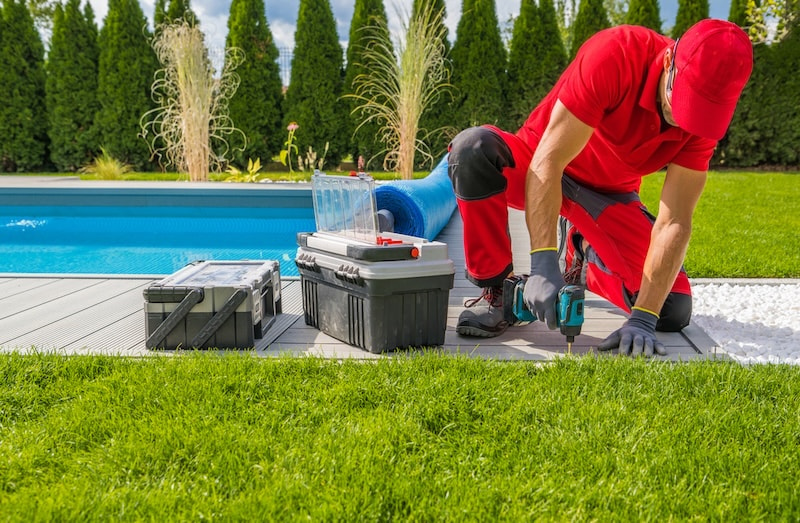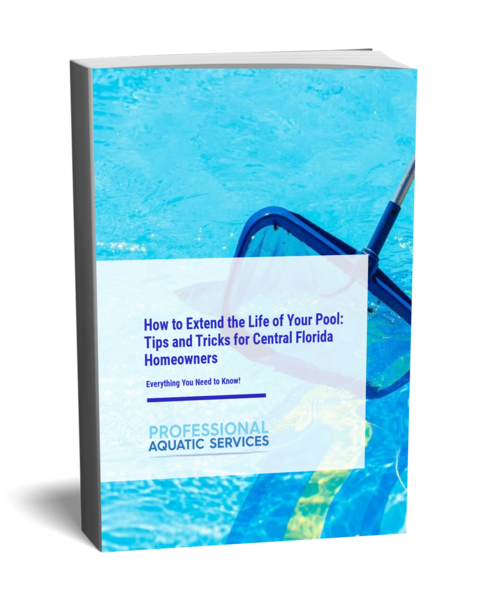You’re here because your pool pump impeller keeps breaking—and it’s getting old fast. You’ve cleaned it, replaced it, maybe even upgraded it, but the same issue keeps coming back. For Orlando homeowners trying to keep their pool running smoothly, repeated impeller failure isn’t just annoying—it’s a drain on your time, wallet, and peace of mind.
The real issue often isn’t the impeller itself, but what’s going wrong around it. Misalignment, low water flow, suction leaks, or even using the wrong part can quietly sabotage your system.
If you’re tired of short-term fixes and ready to stop the cycle, this guide will help you pinpoint what’s actually causing the problem and how to fix it the right way.
Let’s break down why this keeps happening and what you should check first to prevent another repair bill.
Top Reasons Your Pool Pump Impeller Keeps Breaking
When your pool pump impeller keeps failing, it’s often not just a bad part—it’s a sign that something else in your system isn’t working right. These hidden issues wear down the impeller fast and lead to expensive, repeated repairs. Here’s what you should check first.
Improper Installation or Shaft Misalignment
If the impeller and pump motor shaft aren’t aligned properly during installation, pressure builds unevenly. This leads to wobbling and eventually cracks or grinding against the pump housing. It often happens when:
- The diffuser isn’t seated flush
- The pump seal plate is damaged or crooked
- The impeller doesn’t match your pump brand or model
Even if the pump runs for a while, it can fail suddenly under pressure. Loose bolts, bent shaft seals, or misfitted o-rings around the seal plate can all throw alignment off without you noticing.
Low Water Flow or Cavitation
Cavitation forms when the pump isn’t pulling enough water. Air bubbles form and violently collapse inside the impeller chamber. These microimplosions damage the impeller blades. Common signs include:
- Loud rumbling or popping noises
- Air in the pump basket
- Unsteady filter pressure
Check your suction line for leaks, make sure the skimmer isn’t clogged, and confirm that the valves are fully open. A hot pump or motor might mean the pump is overheating due to dry running. Even one dry cycle can ruin most pumps.
Debris in the System
If your pump basket or skimmer misses small particles, those bits of debris go straight into the impeller. This causes friction and weakens the blades. It’s easy to miss a blocked skimmer weir or a cracked basket. Also, check if the intake line is clear—sand, leaves, or even broken filter pieces can sneak past.
If your Orlando spa or pool has shared plumbing, debris from one side can circulate back through a connected line and damage the pump.
Wrong Replacement Part or Poor Fit
All impellers aren’t the same. Using the wrong replacement—even one that looks close—can overload the pump motor, throw off balance, or cause vibration. Off-brand impellers may not match your pump’s internal spacing or bolt pattern. Double-check your pump label before ordering parts.
Also, inspect surrounding components: worn pump seals, bent shaft bolts, or overheated bearings often contribute to repeat failures. Voltage mismatches, stuck breakers, or failing capacitors can also strain the system without tripping a power switch.
Fixing these overlooked issues helps stop the cycle for good.
Hidden Causes You Might Be Overlooking
If your pool pump impeller keeps breaking, the real cause might not be where you’re looking. Sometimes the issue starts upstream—literally.
Air Leaks in the Suction Line
Small cracks in the pipe, worn o-rings, or loose fittings can let air into your suction line. That air doesn’t just flow quietly—it causes cavitation. Cavitation forms bubbles that violently collapse inside the pump housing, putting constant stress on the impeller. Over time, this leads to cracks, pitting, or total failure.
Water Level Too Low
When your pool’s waterline dips below the skimmer opening, the pump can run dry. That means the pump operates without enough water to cool and protect its internal parts. If it runs dry, even for a short time, the impeller can overheat, warp, or seize completely. Always keep the water level at least halfway up the skimmer opening.
Overworked Pumps in Oversized Pools
If the pump is too small for the size of your pool, it runs longer than it should to keep up. That extra runtime builds heat and strain, especially on the impeller. Over time, the pump motor and impeller wear down faster than usual. Make sure your system is sized correctly for your pool’s volume and plumbing lines.
What to Fix First: A Step-by-Step Guide
Fixing a damaged pool pump impeller isn’t just about swapping out a broken part. Like first aid, you need to treat the cause, not just the symptom. If the impeller keeps failing, chances are something else in your system is off. Before replacing the impeller again, go through this quick diagnostic checklist to catch what’s really going wrong.
|
Checklist Item |
What to Look For / Why It Matters |
|---|---|
|
Inspect motor shaft alignment |
Ensure the impeller spins evenly. Wobbling or grinding can indicate a bent or misaligned shaft. |
|
Check seals and gaskets |
Look for worn pump seals or cracked o-rings. These can shift internal parts and throw off balance. |
|
Inspect suction lines and water level |
Watch for air bubbles in the pump basket or inconsistent filter pressure—signs of air leaks or low water. |
|
Clean pump baskets and filters |
Debris can return quickly. Clogged filters or baskets often send particles back into the impeller. |
|
Review impeller specs |
Double-check that the impeller matches your pump model. Mismatched parts may cause further damage. |
Missing even one of these points can cause another impeller failure and lead to bigger problems like motor strain or seal damage. Taking the time to check each part now helps avoid a costly repeat breakdown later.
When It’s Time to Call a Pool Equipment Pro

If your pool pump impeller has already failed more than once, it’s smart to bring in a technician. Some problems just aren’t easy to spot without the right tools or experience.
A pro can:
- Pressure-test suction lines to find hidden air leaks
- Check impeller balance and shaft integrity with precision tools
- Identify faulty components like worn bearings or damaged housing
- Prevent motor damage from prolonged stress or overheating
You don’t want a $50 part issue to turn into a $500 motor replacement. A second expert opinion could save you both time and money.
Break the Cycle Before It Costs More
If your pool pump impeller in Orlando keeps failing, it’s likely pointing to a deeper issue, not just a faulty part. Problems like air leaks, misaligned shafts, or low water flow stress the impeller until it finally gives out. Replacing it without fixing the root cause only starts the cycle again.
Taking a step back and looking at your whole system—motor alignment, suction lines, seals, and water levels—can save you from bigger repairs later. Preventive steps like routine inspections, part compatibility checks, and cleaning your filters make a real difference.
If you’ve already read our guide on the common causes of pool pump impeller failure and the impeller still keeps breaking, now you know where to look next.
Need help? Professional Aquatic Services is here with expert support and trusted solutions to get your system back on track—before the next failure hits.
Frequently Asked Questions (FAQs)
A pool pump impeller often breaks repeatedly due to issues like misalignment, low water flow, or hidden air leaks in suction lines. These stress the impeller over time, causing cracks, warping, or balance problems.
Signs include reduced water flow, unusual noises like grinding or rattling, and air bubbles in the pump basket. You may also notice poor filter pressure or overheating in the pump motor.
No, if the impeller is damaged or missing, the pump can’t move water through the system. Running the pump without proper circulation can damage seals, bearings, and the motor itself.
An incompatible impeller may cause vibration, imbalance, or unusual noise. Always check the model number and manufacturer specifications is properly fit for your pool pump.
Yes, running the pump dry causes the impeller to overheat and warp quickly. Without water, the pump loses cooling and lubrication, leading to seal failure and internal damage.
Replace the impeller if it’s visibly cracked, chipped, or not spinning freely. If you notice frequent clogs, loud operation, or decreased water circulation, it’s time for an inspection or replacement.

